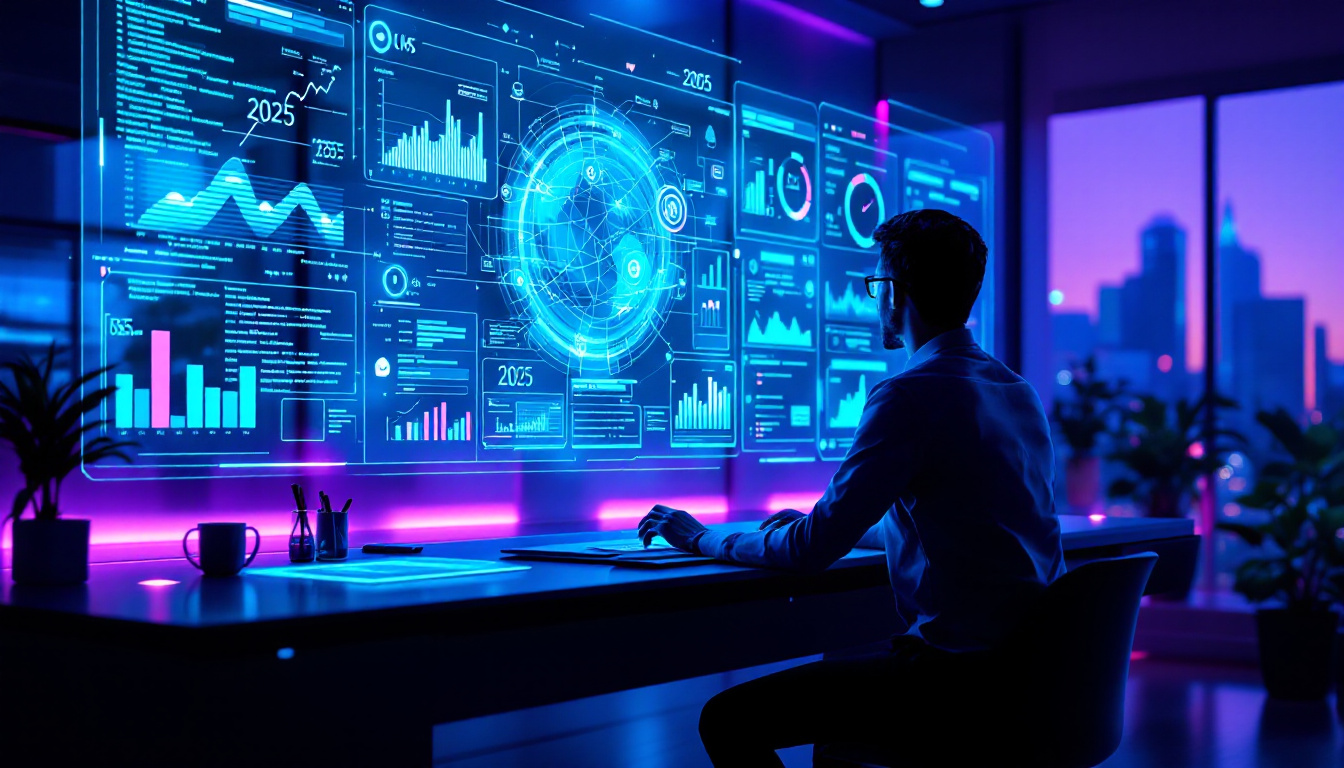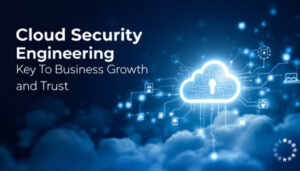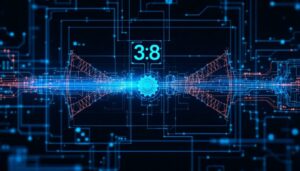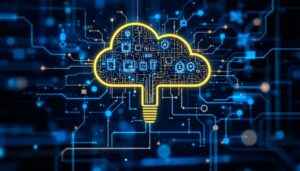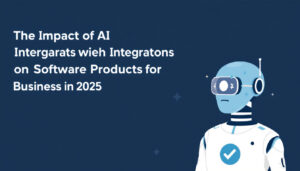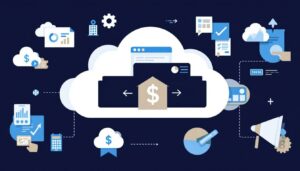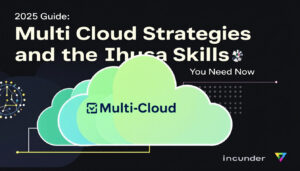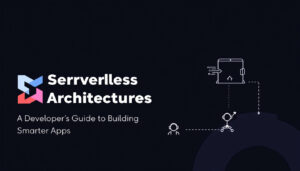Rapid change has become a constant for IT professionals and developers. New tools and frameworks arrive each year, bringing fresh challenges and opportunities. Understanding which digital product trends will shape 2025 is essential for firms aiming to grow, stay secure, and remain competitive, this is a Key Digital Product Trends.
This article highlights the most important shifts in technology set to impact the industry next year. Readers will find clear insights into automation, artificial intelligence, and programming language trends, grounded in recent data and expert input. For additional context on programming language choices, refer to this overview of the top programming languages projected to dominate 2025: https://thespartane.com/programming-languages-ranking-top-9-2025/.
Staying informed about these trends will help teams make better decisions and maintain an edge as digital transformation accelerates.
AI-Powered Product Innovations Transforming the IT Landscape
 Photo by Pavel Danilyuk
Photo by Pavel Danilyuk
Artificial intelligence is no longer an emerging trend; it is reshaping core aspects of digital product development across the IT sector. AI capabilities are now integral to software engineering, automation, and user personalization. These advances are increasing productivity and making products more adaptive to individual and business needs. Below, we examine three major AI-powered innovations that are influencing the direction of IT products heading into 2025.
AI-Driven Code Generation and Optimization
The new generation of AI-powered coding tools is transforming how developers write and maintain code. Solutions like those evaluated in the 2025 AI Code Generation Data Quadrant Report are capable of:
- Autocompleting code efficiently and reducing manual errors
- Identifying bugs and suggesting fixes in real time
- Accelerating onboarding for new developers by automating repetitive work
These AI coding assistants do more than help with syntax. They can understand context, follow best practices, and even refactor existing code for better performance. Companies benefit from increased code quality and faster release cycles. Platforms such as those highlighted in this overview of AI-powered coding tools demonstrate a shift toward greater reliance on AI for complex development tasks.
AI-driven code optimization also supports increased productivity by handling routine updates and flagging areas for improvement. Developers can focus more on high-value activities, with automation handling the groundwork.
Intelligent Automation in Digital Products
Intelligent automation blends rule-based logic, advanced analytics, and self-learning AI models. This combination allows IT products to automate workflows, monitor environments, and make informed decisions with minimal human intervention. These capabilities are especially important in large-scale, cloud-based systems, where manual oversight is often impractical.
Key benefits of intelligent automation include:
- Faster and more accurate task execution
- Reduced operational costs and human error
- Increased uptime through predictive maintenance and anomaly detection
The growing presence of AI agents is a defining development for 2025. These agents—powerful software entities capable of performing tasks, learning from data, and adapting over time—are poised to become critical assets in business operations. For an in-depth analysis of how these agents work and their application risks, see the comprehensive AI agents overview. Businesses using AI agents can delegate increasingly complex functions, gaining speed and efficiency in their digital operations.
The expansion of AI agent capabilities is also discussed in expert perspectives on AI agents transforming business and digital transformation, revealing practical impacts across industries.
Personalization Engines for Enhanced User Experience
Personalization has advanced beyond basic recommendations. Today’s AI-driven personalization engines analyze vast datasets—user preferences, behaviors, and real-time context—to tailor product experiences on a granular level.
In the IT field, these sophisticated engines bring tangible improvements:
- User interfaces that adjust dynamically based on historical use and intent
- Targeted notifications that increase relevance and engagement
- Adaptive workflows and features, refining themselves with every user interaction
AI personalization is shaping both business-oriented and consumer-facing digital products. Organizations are seeing improved user retention and satisfaction, with product interfaces that adapt seamlessly to evolving user needs.
Personalized experiences can also enhance security. Adaptive authentication and access controls adjust based on usage patterns, adding protection while keeping friction low for legitimate users.
For professionals seeking more on AI’s impact on user experience and business outcomes, detailed resources on AI-powered product development are available, such as insights from IBM on AI agent expectations in 2025.
With these AI product advances, the IT sector is seeing marked improvements in speed, reliability, and user-centric design. Each innovation offers new possibilities for professionals and organizations intent on maintaining a competitive edge as the digital landscape evolves.
The Expansion of Cloud-Native Architectures and DevOps
Cloud-native architectures and DevOps practices are changing how businesses deliver digital products. These models offer a path to build, deploy, and scale solutions faster and more reliably than before. They are influencing not only software teams but also operations, electronics, and business strategy in equal measure. The following sections outline the fundamental shifts shaping these areas.
Microservices and Serverless Frameworks
Microservices architecture decomposes complex applications into smaller, independent services. Each service manages a specific function and communicates with other services through well-defined APIs. This structure gives teams the flexibility to update or scale a single part without disrupting the entire system.
Serverless frameworks reduce the need to manage servers. Developers write functions that run only when called, eliminating the responsibility for handling infrastructure. This approach can lower costs and free technical staff to focus on product features.
Key benefits of combining microservices and serverless frameworks include:
- Improved scalability—Services adjust independently to demand, ensuring stable performance.
- Faster deployment cycles—Updates and rollouts are easier to coordinate and test.
- Lower operational overhead—With reduced infrastructure management, more effort goes towards innovation.
These building blocks have been essential in supporting agile product delivery. For organizations seeking to increase efficiency, reviewing proven examples in Cloud Automation Strategies for 2025 offers valuable practical guidance.
Edge Computing for Real-Time Applications
 Photo by Ivan Samkov
Photo by Ivan Samkov
Edge computing brings data processing and analysis closer to the source—such as IoT devices or embedded systems. Doing this minimizes network delays and supports real-time functions that centralized cloud servers cannot handle efficiently. Sectors like manufacturing, healthcare, automotive, and finance all use edge architecture to drive fast, event-driven actions.
Practical examples of edge computing include:
- Real-time monitoring of equipment to prevent breakdowns.
- Smart cameras or sensors enabling instant safety measures.
- Instant feedback in embedded electronics and connected devices.
The push to move workloads closer to the user addresses growing concerns around speed, privacy, and cost. Those interested can explore more insights on how this technology shifts IT delivery in the analysis Edge Computing Revolution.
DevOps Evolution: From CI/CD to GitOps and Beyond
DevOps continues to advance. What began as a movement to break down silos between development and operations has grown into a rich set of practices that drive speed and stability. Continuous Integration (CI) and Continuous Deployment (CD) are now foundational standards. They automate testing and release, reducing error rates and supporting reliable delivery.
A newer stage is emerging—GitOps. Developers manage infrastructure and deployment configurations directly from Git repositories, bringing version control and transparency to the entire operational process. This model naturally extends automation and offers better audit trails for security and compliance.
The evolution goes beyond process automation:
- Infrastructure as Code (IaC)—Resources are provisioned and managed using code, not manual steps.
- Full observability—Data and logs from the system are collected, analyzed, and visualized for better decision-making.
- Collaboration—Teams now operate with shared knowledge using unified workflows.
These shifts are setting new expectations for speed, quality, and resilience in IT products. The capacity to adapt DevOps concepts to changing requirements ensures that both large corporations and startups can maintain effective operations as technology and business demands grow.
For a deeper discussion on DevOps and infrastructure automation, readers may find relevant perspectives in the context of Cloud Automation Strategies for 2025 as it continues to influence workflows in digital product development.
Cybersecurity Paradigms in a Digitally Connected World
As IT ecosystems grow more connected, cybersecurity has become both more complex and more essential. Organizations now face not only the risk of classic breaches but also threats linked to cloud, AI, IoT, and globally distributed supply chains. Security models and compliance standards are evolving. A shift toward adaptive, automated, and preventative security controls is underway—aimed at protecting data and operations without restricting agility. Below are the paradigms and practical approaches shaping cybersecurity for IT professionals and developers in 2025.
Zero Trust and Continuous Security Assessment
 Photo by cottonbro studio
Photo by cottonbro studio
Zero Trust has moved from concept to standard practice. This approach assumes that no device, user, or application—inside or outside the corporate firewall—should be trusted by default. Instead, verification is required every time a resource is accessed. The core principles include:
- Least Privilege Access: Users and applications get only the permissions needed for their tasks.
- Microsegmentation: Network environments are divided into granular zones to contain breaches.
- Continuous Validation: Every access request is checked for authenticity and context.
Continuous security assessment works hand-in-hand with Zero Trust. Tools now monitor configurations, permissions, and user behavior in real time. Security teams can spot anomalies in minutes, not days. This reduces the window for attackers and improves resilience. Proactive detection and instant remediation are critical advantages in environments that rely on multiple cloud services and interconnected APIs.
Zero Trust models are especially relevant as IoT and edge devices proliferate. Enterprises must authenticate thousands of endpoints without adding operational friction. Security is no longer a gate at the network’s edge; it is a constant process, embedded in architecture and workflows.
AI-Enhanced Threat Detection and Response
Artificial intelligence has become a core element of modern cybersecurity. AI systems sort vast and complex data, flagging real threats within noise that would overwhelm human teams. Capabilities now include:
- Automated anomaly detection: Machine learning models recognize subtle, suspicious behaviors in real time.
- Intelligent response orchestration: Automated workflows respond instantly to certain threats—isolating assets or blocking connections before the damage spreads.
- Adaptive learning: Threat intelligence platforms “learn” from every attack, updating defenses without waiting for manual intervention.
AI also helps cut down on false positives, allowing analysts to focus on high-priority alerts. But these advances are not risk-free. Attackers are also using AI to develop more sophisticated strategies, including deepfakes, automated phishing, and adaptive malware. IT teams must balance these gains against potential AI security risks such as model poisoning or adversarial attacks, as described in the AI agents, types, risks, and applications explainer.
Continuous investment in detection and response capabilities is necessary. Automation increases speed, but expert oversight remains key to understanding complex threat landscapes and adapting to new attack patterns.
Compliance and Regulatory Implications for Global Markets
Security standards and privacy laws are expanding. For organizations with a global presence, keeping up with regulations is now a baseline requirement. Key developments include:
- GDPR and Global Privacy Laws: More countries are introducing rules modeled on Europe’s GDPR—mandating clear consent, user data access, and strict breach reporting deadlines.
- Supply Chain Security Mandates: New standards require transparency in how software, hardware, and data partners handle information. Ensuring compliance now extends beyond internal systems to include all third-party vendors.
- Automated Compliance Monitoring: Tools track compliance in real time, alert teams to gaps, and help generate audit reports.
The cost of non-compliance—both financial and reputational—has grown. Organizations are required to demonstrate not just policies, but effective controls and testing procedures for every market they operate in.
Those responsible for compliance must monitor changing international standards and adjust policies as required. Automated assessment platforms and clear documentation can reduce the burden on IT and business leaders, ensuring continued trust with customers and partners.
For further insights into the intersection of security, regulation, and market dynamics, the Admin Author Bio page at The Spartane gives additional context on industry leadership and global trends.
As cybersecurity requirements mature, IT and development teams must keep both technical and regulatory strategies up to date. The architecture they design today must not only stop attackers, but also pass the next compliance audit and adapt quickly as standards change.
Impact of Microelectronics and Advanced Hardware Integrations
The importance of microelectronics and hardware integration is growing. New breakthroughs in microchip design and component synergy are driving high-performance digital products. These changes allow IT professionals and developers to offer more reliable, scalable, and efficient solutions for modern applications. Below, we explore the defining advances in microchip engineering, the merging of IoT, edge, and AI-driven devices, and real-world examples of effective hardware-software integration.
Cutting-Edge Microchip Designs for Digital Products
 Photo by Tima Miroshnichenko
Photo by Tima Miroshnichenko
Microchip innovation underpins the latest digital experiences. Smaller, more efficient chips are making complex functions possible on everything from smartphones to enterprise servers. These advances stem from materials science, manufacturing improvements, and ongoing investment in R&D.
Key milestones shaping digital product development in 2025 include:
- Shrinking node sizes, with manufacturers producing 3nm and smaller chips that reduce power needs and improve processing speed.
- Stacked architectures, allowing memory and processors to be layered, increasing density and efficiency.
- System-on-chip (SoC) integration, reducing latency by embedding CPU, GPU, and AI accelerators in a single package.
The global semiconductor industry forecasts strong growth driven by AI, cloud, and smart device expansion. Industry insights highlight that chip sales are expected to soar in 2025, led by generative AI and data center build-outs.
Looking at history, early microchips revolutionized electronics. Their evolution paved the way for today’s advanced devices and laid the groundwork for hardware-driven software progress, as discussed in the History of the microchip.
Convergence of IoT, Edge, and AI-Enabled Devices
Microelectronics now sit at the heart of a powerful convergence: IoT, edge computing, and embedded AI. Manufacturers are embedding intelligence directly into devices—as small as a sensor or as large as a server. The result is a connected environment that responds instantly and processes data at the source.
Key integration trends include:
- Edge devices with dedicated AI chips for local inference, providing real-time analysis without relying on cloud round-trips.
- IoT modules combining connectivity, processing, and security features, lowering development time for smart products.
- Unified hardware architectures, where a single board supports sensor input, compute tasks, and machine learning.
Industry investments in advanced chip packaging, like CoWoS-L and innovations from leaders such as TSMC, underline this trend. New assembly and packaging solutions are making high-density, high-bandwidth chips possible at scale. To keep up with the latest semiconductor packaging advances, see Three semiconductor innovations to watch in 2025.
With processing closer to the data source, latency drops and privacy improves—a key requirement for healthcare, industrial automation, and autonomous systems.
Hardware-Software Synergy: Case Studies and Future Outlook
Hardware and software now work as an integrated stack, not in isolation. This synergy is necessary for applications that demand fast computation and responsive automation. Real-world case studies show what’s possible when design teams treat hardware and software as complementary.
Notable examples include:
- AI-powered surveillance cameras, where software updates unlock neural processing on existing chips without replacing hardware.
- Industrial controllers using adaptive firmware to adjust to specific tasks, reducing downtime and supporting predictive maintenance.
- Consumer electronics that deliver new features through over-the-air updates, maximizing the value of each device over its lifecycle.
For IT leaders, this approach means lower maintenance costs, faster deployment, and more flexible scaling. The future outlook shows continued growth in embedded intelligence and cross-layer optimization, where performance and efficiency come from close integration of silicon, firmware, and application code.
As digital systems grow more complex, hardware-software synergy will define the next phase of innovation—demanding collaboration across disciplines and a deep understanding of both electronics and code.
Emerging Business Strategies for Developers and IT Professionals
In 2025, developers and IT professionals face an environment defined by speed, agility, and new business realities. Digital product organizations are adjusting their models to respond to advances in AI, updated architectures, and the growing demands for data-centric services. The following strategies are critical for those aiming to succeed as the market shifts.
Monetization Models in the Era of SaaS, DaaS, and Beyond
 Photo by Christina Morillo
Photo by Christina Morillo
The subscription model is the standard for software delivery, but its reach has expanded. Today’s technology firms monetize not only software as a service (SaaS) but also data as a service (DaaS), platform as a service (PaaS), and APIs as products. Choosing the right model can increase stability and boost recurring revenues.
Common monetization routes include:
- Tiered subscriptions: Access varies by user type or usage volume.
- Usage-based billing: Charges increase with data consumption, API calls, or storage.
- Freemium access: Core features are free; advanced capabilities require payment.
- Transactional fees: Charges apply per transaction or data query.
Data-centric models are gaining ground, with DaaS offering analytics, datasets, and processed insights. Businesses can also monetize their expertise by providing AI models or workflow automations under a licensing agreement. Additional information about technical and business strategies in emerging sectors can be found in the detailed analysis at Business strategies for Webtoon XYZ.
Monetization strategies must reflect product capabilities and the value delivered to customers. Security and compliance costs should be factored into pricing. Companies may gain competitive advantage with transparent pricing and effective scaling policies, establishing trust in unpredictable markets.
Building for Digital Ecosystems and Partnerships
Developers no longer create products in isolation. Open platforms, robust APIs, and cloud integrations now define many digital solutions. Modern firms seek to join or create business ecosystems, where products and data flow across company lines.
Key elements of ecosystem-ready products include:
- Standardized interfaces: Open APIs simplify integration across external services.
- Interoperability: Solutions operate with multiple providers or hardware types.
- Marketplace presence: Products are distributed, discovered, and managed through leading cloud or application marketplaces.
- Shared security and compliance standards: Consistency across partners reduces risk and supports growth.
Strategic partnerships expand reach and quicken time to market. By joining established digital marketplaces, organizations can extend distribution globally. Collaboration also motivates interoperability for both technical and business processes.
For developers building in this context, solid documentation, robust authentication, and scalable infrastructure are non-negotiable. Effective collaboration depends on clear standards and reliable support—the foundation of trust among technical partners.
Those interested in developing full-spectrum digital solutions can refer to the guide on Digital Product Solutions for practical insights into building offerings that integrate within broader ecosystems.
Upskilling: Essential Skills for 2025 and Beyond
Rapid shifts in tools, frameworks, and business requirements demand ongoing professional development. Success in 2025 depends as much on adaptability as on technical knowledge.
Priority upskilling areas include:
- Cloud and automation: Mastery of platforms, architectural patterns, and automation tools.
- API design and integration: Understanding how to securely expose and consume APIs.
- Data analytics and AI familiarity: Ability to use and integrate advanced analytics in practical contexts.
- Cybersecurity practices: Applying secure design and staying up-to-date with compliance requirements.
- Business acumen: Translating technical strategies into products that solve real business problems.
Analysis and problem-solving remain at the core. Developers and IT teams benefit from both formal training and community collaboration. Access to modern development tools, hands-on labs, and certification programs will shape hiring and career advancement.
Employers that support continuous learning and cross-functional training build more adaptable teams. Individual professionals should focus on skills that support automation, integration, and real-world product deployment.
Adapting to new strategies and technologies is now a requirement, not a choice. IT professionals and developers committed to upskilling will better navigate a future driven by constant change and expanding expectations.
Conclusion
Digital product trends for 2025 are setting new expectations for IT professionals and developers. Innovations in artificial intelligence, cloud-native platforms, advanced hardware integration, and automation are all driving operational and business change. Keeping skills current and strategies flexible remains essential as these shifts continue to influence product delivery and team structure.
Decision-makers who adapt quickly and invest in knowledge will secure a stronger position in the market. Staying informed and open to new practices will support both technical and business growth. Thank you for reading—your engagement and feedback will help shape future insights.

